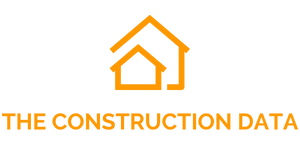
Cement Industry Forecast for the Netherlands, 2025–2029
The “Netherlands Cement Industry Market Size & Forecast: Value and Volume Across 80+ Market Segments by Cement Products, Distribution Channel, Market Share, Import–Export, and End Markets – Databook Q2 2025 Update” has been released by ResearchAndMarkets.com, offering an extensive evaluation of the Dutch cement sector. The latest findings indicate that the industry is positioned for sustained growth driven by expanding construction activity, evolving cement technologies, and significant demand across residential, commercial, and infrastructure developments.
According to the report, the Dutch cement market is projected to grow by 6.3% in 2025, reaching a total value of US$331.9 million. This comes after a strong performance from 2020 through 2024, during which the market recorded a healthy CAGR of 6.8%. The long-term outlook remains optimistic, with a forecasted CAGR of 5.9% between 2025 and 2029. By the end of the forecast period, the market value is expected to rise from US$312.2 million in 2024 to approximately US$417.9 million in 2029, supported by rising construction investments, stricter sustainability targets, and increasing adoption of advanced blended and green cement products.
This research report delivers an extensive, data-rich assessment of the cement market in the Netherlands, grounded in more than 80 key performance indicators (KPIs). Its comprehensive methodology ensures detailed insights into market size, structure, growth patterns, and competitive positioning. Leveraging a proprietary analytics platform, the study offers unbiased evaluations of current conditions while identifying emerging opportunities in production, distribution, and end-use categories. The report is particularly valuable for investors, manufacturers, policymakers, and construction industry stakeholders seeking reliable intelligence for strategic planning.
Market Scope and Analytical Coverage
The report takes a forward-looking view of the industry, analyzing trends in pricing, production, consumption, and market segmentation from 2020 through 2029. It dissects cement demand across major construction categories—residential, non-residential, and infrastructure—while offering deeper examinations of market segmentation by cement type, distribution channel, location tier, and end-user group.
Netherlands Cement Industry Overview
Key production and consumption metrics are analyzed both in volume and value terms. Average price trends are assessed at the overall market level as well as by specific cement types, providing a clear picture of cost movements and pricing dynamics.
Cement Market by Product Type
The study examines four major cement categories:
- Portland Cement
- Blended Cement
- Specialty Cement
- Green Cement
Blended cement receives further segmentation due to its rising relevance in sustainable construction. Subcategories include Portland-slag, Portland-pozzolan, Portland-limestone, and ternary blended cement, each with unique performance characteristics and environmental advantages.
Specialty cement is also broken down into rapid-hardening cement, high-alumina cement, white cement, sulfate-resistant cement, and several niche products used for specialized structural and architectural applications.
Market by Key Construction Sectors
The Netherlands’ cement demand varies significantly across construction segments:
Residential Construction
The report distinguishes between:
- Multi-family housing, which continues to benefit from urban densification, and
- Single-family housing, where demand is driven by suburban expansion and redevelopment efforts.
Non-Residential Construction
This includes:
- Commercial buildings, such as offices, retail centers, hospitality establishments, restaurants, and sports facilities
- Industrial buildings, including manufacturing units, pharmaceutical plants, and metal or materials processing sites
- Institutional buildings, such as hospitals, schools, and other public facilities
Each subsegment contributes differently based on economic activity, public spending, and private investment cycles.
Infrastructure and Related Construction
This segment represents a substantial share of cement consumption and is influenced by national infrastructure modernization, transportation network expansion, and environmental resilience projects.
Market by Distribution Channel
The Dutch cement sector is structured around two primary distribution models:
- Direct B2B sales, typically involving large construction firms and ready-mix concrete producers
- Indirect channels, including retailers and dealers serving smaller contractors and individual buyers
Each channel has distinct pricing, logistics, and margin characteristics.
Market by End-User Profile
Cement consumption is also evaluated by end-user type:
- Ready-mix concrete producers
- Concrete product manufacturers
- Individual consumers engaged in small-scale projects
- Other commercial and industrial users
This segmentation provides clarity on which user groups drive the most demand and how industry shifts may influence future growth.
Geographic Segmentation by City Tier
The report divides the market into Tier-I, Tier-II, and Tier-III cities, highlighting how urbanization, regional development, and population density influence cement consumption patterns across the Netherlands.
Trade Dynamics and Competitive Landscape
The study explores import and export flows, detailing the Netherlands’ key trade partners. It also outlines market share distribution among leading players, presenting insights into competitive strategies, industry consolidation, and emerging entrants.
Reasons to Invest in the Report
The databook offers several advantages to stakeholders:
- Access to detailed, segment-level data on production, consumption, pricing, and trade dynamics
- Insights into growth patterns across residential, commercial, and infrastructure sectors
- Tools for benchmarking market performance using historical and forecast data
- Understanding of localized risks, opportunities, cost structures, and trade dependencies
- Reliable frameworks to support high-level decision-making in operations, finance, and commercial planning
Overall, the report provides a structured, comprehensive foundation for analyzing the Dutch cement industry, helping stakeholders navigate shifting market dynamics and capitalize on future opportunities.
Source Link:https://www.businesswire.com/




